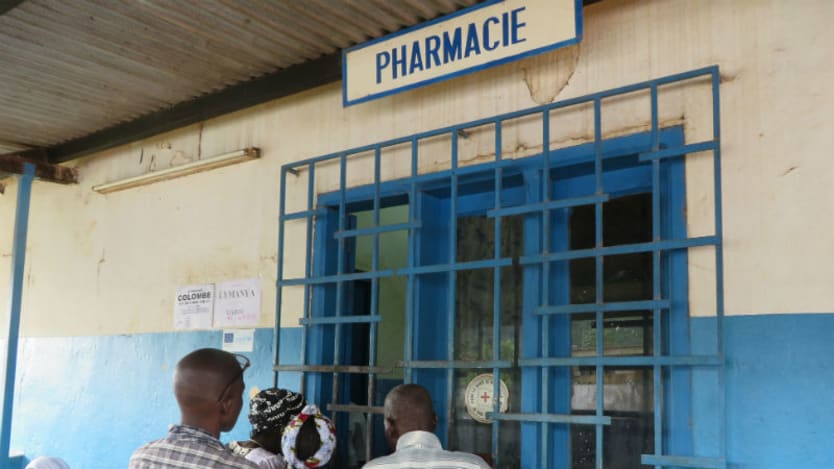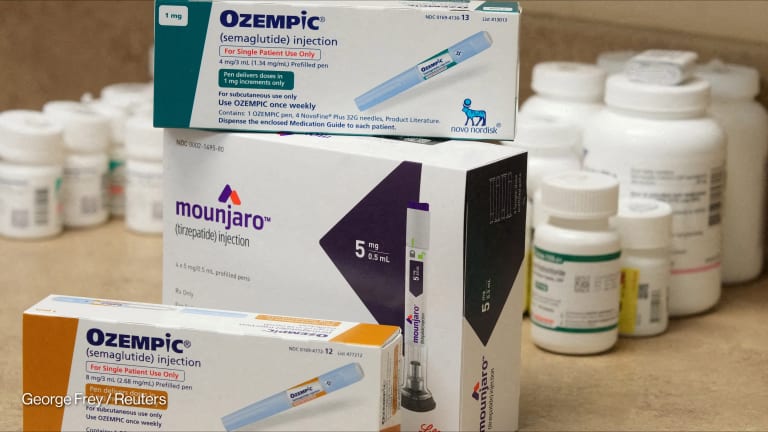
Billions of people are already cut off from the medicines they need to save their lives. That reality could be set to get worse as low- and middle-income countries — already facing the brunt of access shortages — experience a growth in noncommunicable diseases.
NCDs, which include cancer and diabetes, account for the majority of the world’s deaths. And they are gaining a greater foothold in LMICs. The rise of the middle class in those nations has brought with it many of the lifestyle habits that promote those diseases. The World Health Organization has estimated that by 2020, NCDs will cause seven out of every 10 deaths in developing countries.
The demand for medications to treat those diseases, along with ongoing infectious illnesses, will increase needs in countries that are already facing problems in everything from consistent delivery of drugs, to prices that are just too high.
To address these issues, actors all along the process from creation to procurement to delivery are introducing new innovations to try to ensure medicines affordably reach the people who need them most. But can these emerging programs and partnerships deliver on this promise?
Ensuring access to basic medicines
The access issues that Management Sciences for Health found in rural parts of Tanzania are replicated in LMICs across the world. Since 1971, MSH, a private, nonprofit, has worked to improve health care in more than 150 countries, with a specific focus on innovations to improve access. In Tanzania in 2002, MSH realized the medicines needed for basic treatment are in the government system, but not available to patients — either because health facilities ran out of stock or were too far away.
Instead, patients turn to private dispensaries in high numbers. MSH reports that 82 percent of people in sub-Saharan Africa seek health care and medicines from retail drug shops — even though the people staffing them often have little knowledge or training. In Tanzania, MSH decided to try to change that, conceptualizing a program in 2002 to set government standards for the accredited drug dispensing outlets, or ADDOs, and upping the knowledge of the people running them.
“We were really walking through all the deficiencies of the existing system and trying to improve them,” said Jafary Liana, formerly a senior technical adviser with MSH, who now works as a private health care consultant. What they helped create, he said, was a cadre of better-trained ADDO employees who could assist patients in getting the medicines they actually needed and, in turn, greater demand from people who came to trust the services.
In 2011, the Tanzanian government decided to take the project to scale. It now stretches across 10,000 ADDOs, Liana said, and underscores the importance of government involvement — even in a public-private partnership such as this one.
“Many projects prove to be working, but uptake by the system is a problem,” he said. “They end up at the pilot or small scale.”
Getting new actors involved
Early efforts to push improved access to medicines for people in the developing world often fell to international bodies, civil society groups and nongovernmental organizations, starting with a movement at the beginning of the 21st century to improve development of drugs for neglected tropical diseases, such as Chagas’ disease and dengue fever.
As the push broadened and garnered more attention, pressure increased on other actors — including governments and pharmaceutical companies — to get more involved in finding innovative solutions.
Dr. Eddie Mwebesa has seen the impact of that pressure on the Ugandan government. Mwebesa started working for Hospice Africa Uganda in 2003. Now the chief executive director, his organization is the main — and has been at times the only — provider of palliative care for people in Uganda.
Like many low-income countries, Uganda’s health system is riddled with gaps, including widespread shortages of health workers — especially in rural areas — and medical equipment. There are also regular drug stockouts, amid broader shortfalls of essential medicines, including drugs to ease pain for cancer patients.
That started to change in 2011, he said, with government efforts to improve access to pain medication — the result of patients becoming more vocal and regional and international pressure for a more comprehensive cancer response. Because overall funding for the health sector remains low — at less than 10 percent of the annual national budget, according to the WHO, officials began experimenting with innovative public-private partnerships and other models. The result is that “access to pain medication skyrocketed,” Mwebesa said, something that could easily be replicated in other settings.
While governments can ease purchasing and facilitate distribution, there has also been a push for actors who come in earlier in the pipeline — especially pharmaceutical companies — to get more involved. The need is obvious: They control what medicines are developed and, to some extent, how they are priced.
And many of the leading pharmaceutical companies are responding, according to Jayasree Iyer, executive director of the Access to Medicine Foundation, as they increasingly view improving the availability and affordability of medicines as a strategic issue for themselves.
Every two years the Access to Medicine Index, an independent initiative published every two years by the foundation, ranks the efforts of top pharmaceutical companies to improve access in developing countries.
“It started out as corporate social responsibility,” Iyer said, but the thinking has now evolved as “companies realize there is more they can actually do and amid a public call for their actions.”
It also makes sense from a business standpoint, giving them access to emerging economies and, even to rising middle classes that still exist within low-income countries. Already, three of the world’s largest drugmakers earn more than a quarter of their revenue from emerging markets. “It tells you the world is changing,” Iyer said.
It is to their advantage to encourage the continued growth of these consumers by pricing drugs affordably, rather than making them so expensive it pushes a family back into poverty. While the governments of many LMICs promise free or reduced medications to their citizens, the reality is that the drugs are often out of stock and people are forced to buy them from private pharmacies. And because health insurance is rare in many developing settings, they often have to pay full price. That has spurred some companies to introduce tiered pricing for critical medicines, while others have fixed, low costs for LMICs.
Gilead is one of the drug companies to introduce tiered pricing. Clifford Samuel, senior vice president of access operations and emerging markets, said they consider a combination of gross national income per capita alongside disease burden before making pricing determinations.
“If you’re serious about access, it’s an excellent model for how you go about it in these countries,” Samuel said.
The companies are also interested in pushing for improvements to the supply chain and reduced corruption or theft in the distribution system, Iyer said, because they want to ensure their products are reaching the consumer.
It is early in many of these efforts to measure their success, she said, though the Index has highlighted the fact that research continues to focus on five major diseases — lower respiratory infections, diabetes, cirrhosis of the liver, HIV and malaria — and needs to broaden to address other health issues in developing settings, especially amidst the rise in NCDs.
Access vs. intellectual property
For the pharmaceutical companies, concerns also linger around the rapidly shifting landscape of intellectual property, especially when company demands for protections of its inventions and reimbursements for research and development come into conflict with calls for more affordable access to medicines.
Judit Rius Sanjuan, the U.S. manager and legal policy adviser for Medecines Sans Frontieres’ access campaign, said this conflict has had severe consequences.
“There’s not enough innovation,” she said. “We don’t have tools, drugs, vaccines, diagnostics we can use to save lives.”
The divide between the right to health and intellectual property protection is at the heart of a High-Level Panel on Access to Medicines organized by United Nations Secretary-General Ban Ki-Moon. And the task they have been assigned, according to co-chair Ruth Dreifuss, the former president of Switzerland, is significant.
“We have to find a new balance between these rights and the right to health,” she said. “A coherent and comprehensive approach of trade, IP, public health and human rights needs to be streamlined and coordinated at the highest level of decisions.”
The HLP report, expected soon, will help guide that coordination and could have a significant impact on how future IP frameworks are constructed. Sanjuan said the degree to which it does that would depend on the language in the report. She said she hoped it would be strong enough to “start a political process” to spur innovation.
Innovating for the future
There is no single solution to improving access to medicines, experts agree, nor a single step in the process at which it must happen. Instead, it will require a concerted effort from all actors — but especially emerging partners, such as governments and pharmaceutical companies that control the development and delivery of medicines.
And there are encouraging signs that this is happening, from the organization of the HLP committee, which signaled a recognition that a barrier to access needed to be addressed, to the increased willingness of pharmaceutical companies to engage in this debate. Much of this is driven by the increasing fears that without improved access, NCDs could swamp LMICs.
“The NCDs are creating a double burden,” Iyer said. “It’s quite unique and exacerbated in a continent like Africa.”
It’s a reality that, with a range of new innovations, actors from across the drug-delivery process are racing to prevent.
What are the most critical innovations to spur improved access to medicines for people in the developing world? Have your say below.
Andrew Green reported from Durban on a fellowship with the International Reporting Project.
Access to Medicines is an online conversation to explore work being done to guarantee access to lifesaving medicines, where solutions are still needed. Over three weeks Devex, along with our partner Management Sciences for Health, will analyze and amplify the discussion on global access to medicines and examine the future of medicine access for individuals at the last mile, in a way that saves lives, empowers communities and builds resilient health systems. Join us as we look toward the future, tagging #access2meds and @Devex to share your thoughts.








